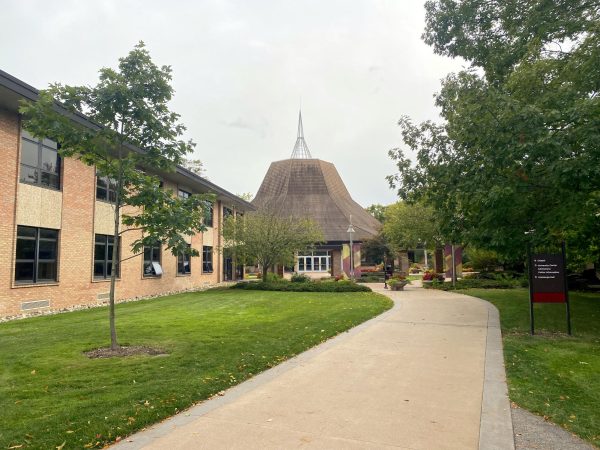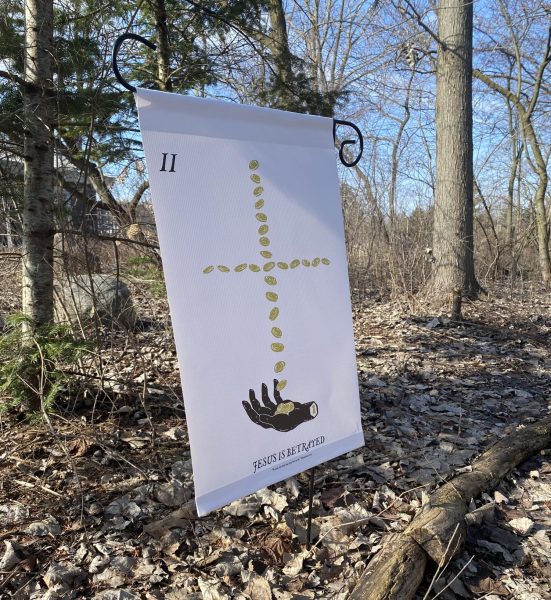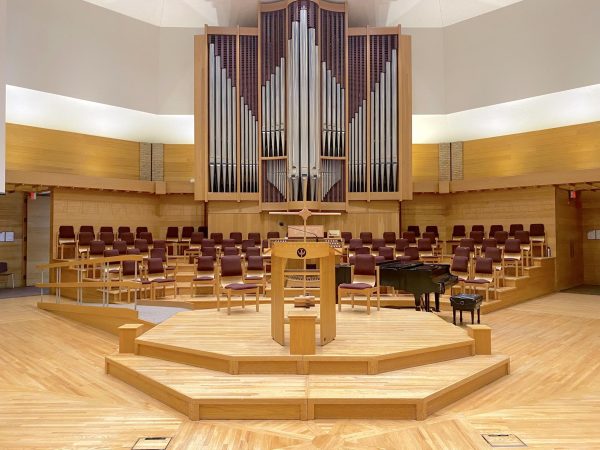Beets Contest Awards Best Religion Papers of 2018
Hannah Gritter, Joshua Polanski and Elena van Stee presented their winning papers at the Beets contest for the best religion papers of 2018 to the religion department on Friday, March 8. The Beets contest originated as a contest for papers only on the topic of John Calvin and Calvinism but changed over time turning into its current form in 2016. It is open to all students who are taking a religion course. Any paper written for a religion course can be self-nominated, but often professors will recommend to a student that they submit their paper.
First place went to Hannah Gritter, a junior speech pathology and audiology major, who wrote on “The Idea of the Fall of the Devil in the Theology of St. Anselm of Canterbury.” Second place was tied between Joshua Polanski, a junior communications and religion major, who wrote on “The Pastoral Use of the Virgin Mary in St. Ambrose,” and Elena van Stee, a senior sociology and religion major, who wrote on “The Parable of the Workers in the Vineyard.”
Gritter wrote her paper for her Religion 131 class. Her paper explored Anselm’s theology about the fall of the Devil. It discussed the free will and got into the concept of evil and how it is nothing. Just like darkness is the absence of light, evil is the absence of good. Anselm proposed that the Devil fell because he made the individual choice of rejecting the gift of perseverance. It further discussed the dual nature of rational will with it being the will for justice and the will for self-benefit, happiness or advantage.
When asked why she chose the topic, Gritter said that she had never heard about the Devil’s sin, the original, original sin before the fall of Eden, and was curious about it. She was looking through Anselm’s works and it stuck out to her as intriguing.
Polanski wrote his paper for his Religion 243 class. His paper was on how Saint Ambrose used Mary, the mother of Jesus, to pastor his community. Saint Ambrose used Mary as a model for the virgins and focused on the motherly nature of Mary and how her motherly role could not be separated from her virginly role. Ambrose also emphasized Mary’s, using it as a role model for the celibate communities in comparison to the sexualized Roman female communities of the time.
When asked about how he found the topic, Polanski said that he actually found it through a YouTube lecture series. He had previously enjoyed Ambrose’s works and found it interesting how early Maryology started.
Van Stee wrote her paper in the spring, unlike the other winners. Van Stee looked at the various interpretations of the parable of the workers in the vineyard. Jesus’s original audience found the parable confusing given the lack of explanation of it. Over the centuries, there have been various interpretations. However, two main interpretations arose. One was that the time of day is the ages of man. The second is that the time of day is the stages in a person’s life such as childhood, adulthood and the death bed. In order to gain a better interpretation, readers should look at the whole story and the surrounding stories to get a better context and message.
Van Stee chose her topic after coming across some bizarre allegorical interpretations of the parable. She has also entered into the contest previous two years.
For more information regarding the Beets contest, contact Dr. Smit of the religion department at [email protected].









